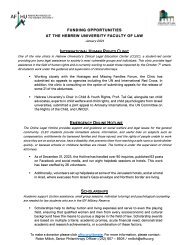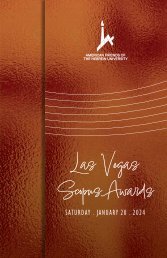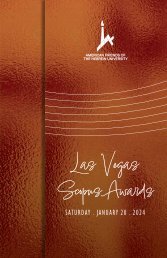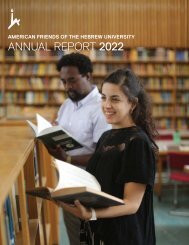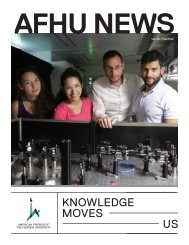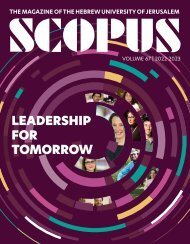You also want an ePaper? Increase the reach of your titles
YUMPU automatically turns print PDFs into web optimized ePapers that Google loves.
in 3D<br />
Using these 3D models Prof. Grosman and her research team were<br />
able to ascertain that masks from Judea and possibly Samaria circa<br />
-7000 BCE during the Neolithic period were worn on the faces of<br />
living people rather than used as ritual mark of death– ascertainably in<br />
some kind of ceremony- even though the masks represent skulls rather<br />
than faces.<br />
The technology has also allowed archeologists to differentiate<br />
between objects manufactured in two different potters’ workshops<br />
from the same village and to discern the individual finger styles of<br />
different potters. One of Prof. Grosman’s doctoral students, Ortal<br />
Harush is using the 3D technology to outline the learning curve of a<br />
potter’s progression—an extraordinary and previously unobtainable<br />
revealing detail about these ancient vessels.<br />
Harush is working with students at Bezalel Academy of Arts and<br />
Design on the research, presenting just one example of the large<br />
number of partnerships that the Lab has fostered.<br />
Initially, archeologists around the world were reluctant to embrace<br />
this new technology, but their hesitations diminished as they came to<br />
appreciate the vast possibilities offered through 3D analysis. Today,<br />
most archeological centers in Israel use the Hebrew University’s<br />
technique, as do universities across the globe, including the University<br />
of San Diego, the Sorbonne in Paris, the Monrepos Archaeological<br />
Center in Neuwied Germany and Russia’s Siberian Federal University.<br />
“In the beginning it was difficult to convince traditional archeology<br />
about the value of 3D analysis,” Prof. Grosman said, “but now the<br />
adoption rate is ‘exponential.’”<br />
Tens of thousands of artifacts have now been scanned as researchers<br />
send their objects to the Lab to be documented. With this huge and<br />
growing repository, Prof. Grosman wants to develop an algorithm<br />
that will sort through all the data and help archeologists more easily<br />
classify their artifacts, and possibly indicate hitherto unknown<br />
relationships between different peoples in the ancient world.<br />
“You will have an artifact. You will go to the database and you’ll<br />
put in your new 3D model and you’ll ask: what does it resemble,<br />
where does it fit, where does it stand when you compare it with<br />
assemblages?” she explained. “It’s like searching in Google except<br />
this will be adopted for archeological objects.”<br />
By Yigal Grayeff<br />
<strong>2017</strong>-2018 39




